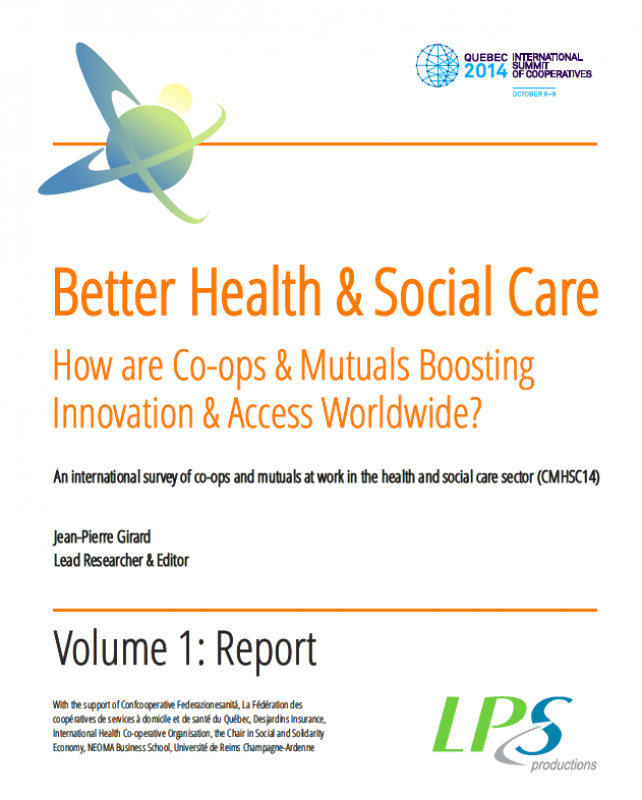Better Health and Social Care - How are Co-ops and Mutuals Boosting Innovation & Access Worldwide?

This report aims to show the variety of contributions made by cooperatives and mutuals in the health and social care sector and how innovative these contributions have been.
The research was undertaken by a team which sourced information and data from government offices, cooperative organizations, research centres, and in some cases, individual cooperatives. It provides an overview of the number and variety of member-based organizations which are involved in curative or health treatments but also in health promotion, prevention, rehabilitation, and social care. It describes a wide range of activities and confirms that cooperatives and mutuals in the health and social care sector are active in far more countries than one might assume.
The report provides information from 59 countries from the world’s five major regions. It recounts how cooperatives and mutuals bring people together: from a small health mutual in Burkina Faso, in order to offer affordable health plans to poor people, to huge cooperative organizations in Brazil, by means of which more than 100,000 doctor-members provide health services nationwide. It describes a women’s health cooperative in a village near Kathmandu which went on to become a model for health care delivery in Nepal. It documents a paramedic worker co-op in the vicinity of Québec City, Canada, with state-of-the-art ambulances and first-responder equipment.
While the main focus of this report is health service provision and delivery, three other fields of activity closely connected to health care are also included: social care, pharmaceutical production and distribution, and health mutual organizations.
Edited by Jean-Pierre Girard
Publisher - LPS Production and International Summit of Cooperatives 2014 (October, 2014)
